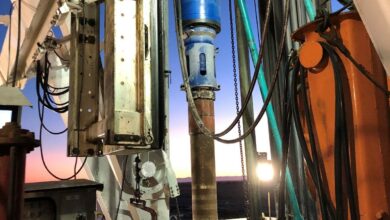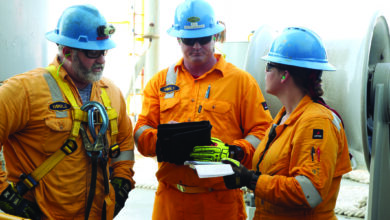From the Chairman

Here we are, over a year into this COVID-19 pandemic, and with such a severe contrast of its effects on all operations across the various regions of the globe where IADC members operate.
While we saw recently that the US managed to vaccinate 4 million people in 48 hours, other areas of the world have only been able to access notional supply lines. While I would suspect that this has not caused significant operational shutdowns in your areas of operation, the COVID-19 issue continues to severely hamper the global economic recovery.
I would be remiss if I didn’t mention how the COVID-19 issue has and continues to wreak havoc with the efficient movement of personnel and the crewing of rigs. Notwithstanding the challenge of training crews while maintaining safe and efficient wellbore delivery to our clients, the very challenge of keeping crews focused on the tasks at hand during this period of time – where fear mongering plasters the headlines and creates anxiety for everyone – is an achievement for the industry.
It is interesting when we look at the actuarial facts related to COVID-19. Referencing a recent periodical article, the chances of a 30-year-old losing their life in a motor vehicle accident in the next three months is greater than losing their life to COVID. For elderly people over 80, the average age expectancy has dropped by only 67 days.
Absolutely, COVID-19 is a very serious coronavirus and should not be taken lightly, but the burden of responsibility we put on governments should be focused on solutions, rather than on general population lockdowns, which kill economies and drive other unintended consequences.
While a weary captain in the Suez Canal was able to pop crude oil futures temporarily, the macro issue is still the demand pause caused by the COVID-19 pandemic. Nonetheless, depletion is real, and despite the very slow demand recovery, WTI hovers around a healthy $60 and natural gas at $2.40.
Access to capital continues to constrain operators’ ability to fund incremental drilling programs around the world, most prevalent in the US. While there is no doubt that the banks, et al, are on the ESG bandwagon, it was interesting to see the US Labor Department finalizing a rule recently that retirement plan fiduciaries must base investment decisions solely on pecuniary factors and that non-monetary considerations (ESG) can be taken into account only in the rare case of tiebreakers. Could this be a sign that common sense is actually weaving its way back into the capital markets? Perhaps the recent Texas wakeup call has also had some impact.
In the US market, where we saw E&P deals jump to $3.4 billion in Q1 as shale consolidation continues – a five-fold increase over the same period a year ago – it is expected that this will eventually parlay itself into putting more holes in the ground, with generally increased activity for IADC members. Notwithstanding, activity generated from those deals is not expected to materialize until well into the back half of 2021.
A final anecdote: In a recent call with OFS analysts, it was mentioned that a typical electric AC drill rig generates less emissions/HP than a Tesla EV. The response was, “How could that be?” The response to that was, “The Tesla EV is charged from an electrical grid that in North America is 40% coal-fired electricity.” Interesting. DC



